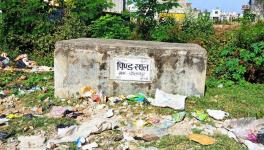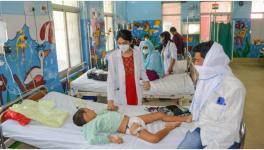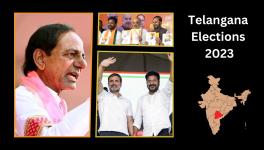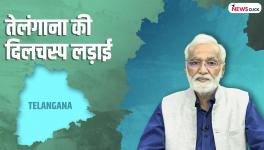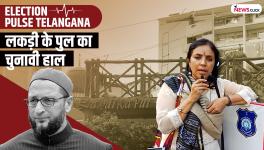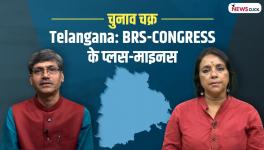How Telangana Fared in Health Under TRS Rule?

Telangana Health Minister C. Laxma Reddy along with Chief Executive Officer of Aarogyasri Health Care
As Telangana gets ready for its second Assembly elections, scheduled to be held on December 7, all political parties are busy campaigning for their candidates. The ruling Telangana Rashtra Samithi (TRS) is reaching out to the people, claiming “achievements” in the last four years of their rule.
Among its tall claims, the major one has been that lakhs of people have benefited from the government's health policies. But, in fact, what the first government in the state is not acknowledging is the numerous discrepancies in its measure with respect to health.
Also Read: Deplorable Situation of Agriculture in Telangana: TRS’s Role
In various areas -- expenditure on health sector, utilisation of funds allocated in the annual budgets, modernisation of health centres or implementation of existing policies -- TRS has actually scored less in its progress report.
The following key indicators throw light on the state’s performance in the health sector..
Consider this: Aarogyasri Health Care Trust has been the major health policy in the state, which has taken shape in the erstwhile Andhra Pradesh. The main objective of this policy has been to provide free quality hospital care and equity of access to below poverty line (BPL) families to protect against catastrophic health expenditures. In 2016-17, the state government had allocated Rs 1,142.73 crore for its implementation. Despite a dire need of health care in the state, as per CAG analysis, the total expenditure spent under this policy was only Rs 824 crore, that is 318 crore amount was left unspent.
Here is how the TRS regime had actually spent on health. Expenditure on Medical, Public Health and Family Welfare, as compared to the aggregate expenditure of Telangana in the last four years under TRS regime, has been significantly low. While the average expenditure of all states in this category stood at 4.7% in the last three financial years, in Telangana, it was 4.1% in 2014-15, which fell down to 3.9% in 2015-16. The expenditure slightly increased in the 2016-17 financial year to 5.1% . However,this came down to 4.1% in 2017-18, according to the data on state budgets from Reserve Bank of India.
As per the Comptroller and Auditor General’s (CAG) audit, the state government did not even conduct annual facility-level surveys, which are intended for identification and fixing of decentralised monitorable goals, indicators and deficiencies in the existing healthcare facilities. Also, the government did not adhere to bottom-up and community-owned approach to public health planning while preparing the State Program Implementation Plans (SPIP) .
Furthermore, CAG found that the medical health department had not fully utilised the funds released between 2014-17. The utilisation of its own funds were limited between 38% and 44% during 2012-14 and between 39% and 46% during 2014-17. Similarly, there was shortfall in spending on maternal health -- only 31% to 50% during 2014-17. The expenditure on the crucial child health component also did not exceed 26% of the approved outlay in any year during the period 2014-17.
The details of other key indicators are here. The institutional deliveries have declined from 69% in 2013-14 to 42% in 2016-17 in public health facilities as compared to deliveries in private health facilities - which registered an increase from 31% to 58% during the same period.
Telangana recorded a very high rate of Caesarean-section deliveries at 45% out of the total deliveries reported in the State in 2016-17. This stood at 67% in private health institutions. Maternal Mortality Ratio and Total Fertility Rate was satisfactory atthe state level.
The state also failed to accord the required physical as well as human infrastructure in the health facilities.
The below table represents the current status of health manpower in Telangana’s rural areas, as per data from National Health Mission.
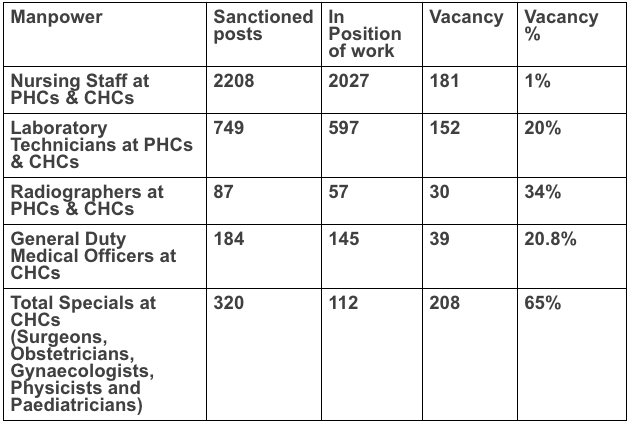
The above table points out that the rural areas in the state lack the essentially required manpower, a crucial parameter significant for health facilities. One of the consequences of this has been that Maternal Death Review and the Infant Death Review were largely not conducted.
Also Read: Telangana: Education Gravely Neglected Under TRS Regime
The TRS government is also mired in controversies in terms of utilisation of important funds. An RTI query filed with the state revenue department in 2015 by anti-corruption activist Vijay Gopal found that the government has no information about the people whose names have been listed next to cheques worth Rs 84.9 crore granted from the CM’s relief fund. The amount form this fund is meant for providing financial assistance to “poorest of the poor”, those suffering from health problems that need expensive medical care, families of those who lost their kin and kith, or if there is loss of property or livelihood due to natural calamities and in certain cases of road and fire accidents.
Get the latest reports & analysis with people's perspective on Protests, movements & deep analytical videos, discussions of the current affairs in your Telegram app. Subscribe to NewsClick's Telegram channel & get Real-Time updates on stories, as they get published on our website.









